Top 10+ Best and Worst Hospitals In The UK - Full List of 100+
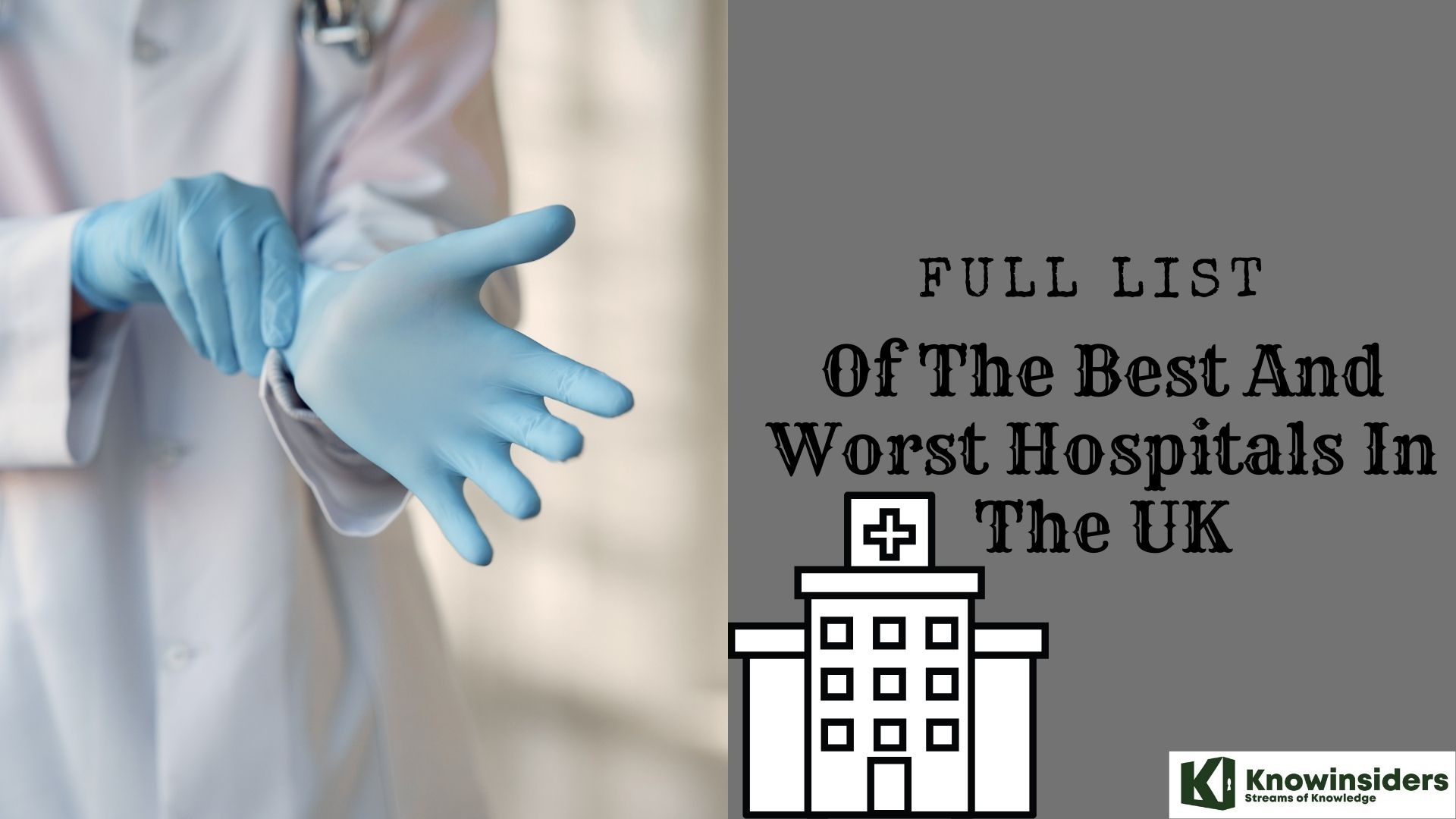 |
| Full List Of The Best And Worst Hospitals In The UK |
The best to worst hospitals across the country have been ranked in a new study.
During the past two years, UK hospitals have been at the front line of the fight against Covid-19 with a time of huge upheaval, change and adaption for many medical institutions, with some faring better than others.
Now Newsweek has completed a study in which the hospitals have been ranked from best to worse.
The best ranked is St Thomas' Hospital in London while the worst ranked is Derriford Hospital in Plymouth, Devon.
The hospitals which have risen to the challenge are those that have learned to work faster by communicating better, according to Dr Gregory Katz, professor of Innovation & Value in Health at the University of Paris School of Medicine.
♦ Check out: Full List: Best and Worst Hospitals In The UK 2023 - HCPS and NHS Trust
List of Top 10 Best Hospitals in the UK
1 St Thomas' Hospital
2 University College Hospital
3 Addenbrooke's
4 John Radcliffe Hospital
5 St. Bartholomew's Hospital
6 Guy's Hospital
7 Chelsea and Westminster Hospital
8 Queen Elizabeth Hospital Birmingham
9 Freeman Hospital
10 The Royal Victoria Infirmary
What are the best hospitals in the UK Right Now?
1 St Thomas' Hospital
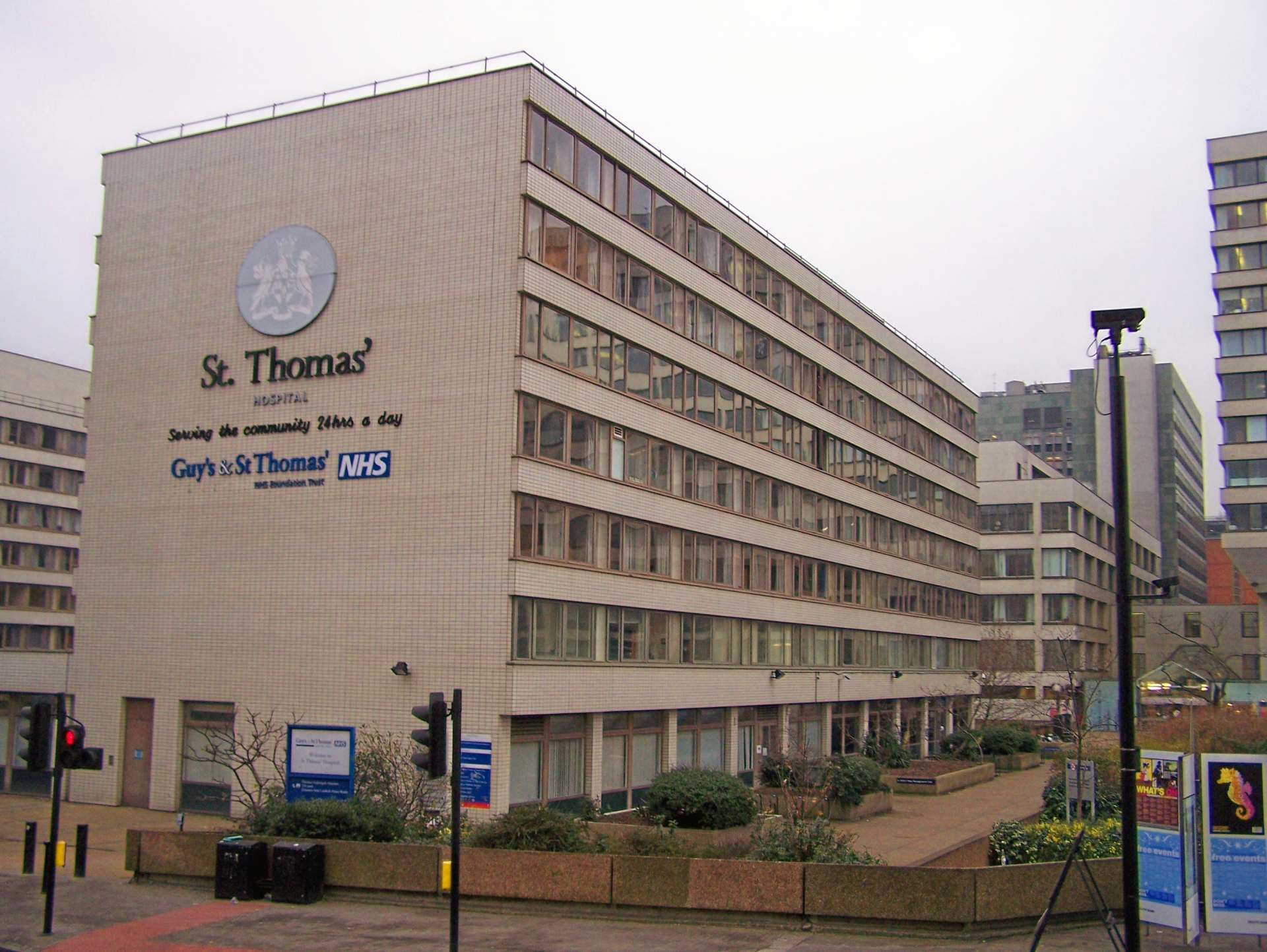 |
| Photo: Wikimedia Commons |
St Thomas' Hospital is a large NHS teaching hospital in Central London, England. It is one of the institutions that compose the King's Health Partners, an academic health science centre. Administratively part of the Guy's and St Thomas' NHS Foundation Trust, together with Guy's Hospital, King's College Hospital, University Hospital Lewisham, and Queen Elizabeth Hospital, it provides the location of the King's College London GKT School of Medical Education.
Originally located in Southwark, but based in Lambeth since 1871, the hospital has provided healthcare freely or under charitable auspices since the 12th century. It is one of London's most famous hospitals, associated with people such as Sir Astley Cooper, William Cheselden, Florence Nightingale, Linda Richards, Edmund Montgomery, Agnes Elizabeth Jones and Sir Harold Ridley. It is a prominent London landmark – largely due to its location on the opposite bank of the River Thames to the Houses of Parliament.
St Thomas' Hospital is accessible from Westminster tube station (a 10-minute walk across Westminster Bridge), Waterloo station (tube and national rail, also a 10-minute walk) and Lambeth North tube station (another 10-minute walk).
The current main pedestrian entrance is in Westminster Bridge Road, although there is a separate vehicle and A&E entrance in Lambeth Palace Road; there is also a riverside pedestrian entrance, and the Lane Fox Unit (chronic respiratory problems) has its own riverside entrance, mainly for the use of patients on the Lane Fox Ward. The pedestrian entrance to the campus leads to a glazed link between the Lambeth Wing and the North Wing. Guy's and St Thomas' Charity commissioned sculptor Rick Kirby to produce a sculpture "Cross the Divide", and this was unveiled in 2000 outside the Main Entrance. To the north of the North Wing (closer to Westminster Bridge Road) there is a garden area above car parking with Naum Gabo's fountain sculpture Revolving Torsion at its centre.
Tommy's is a UK-based charity that funds research into pregnancy problems and provides information to parents. The charity believes that it is unacceptable that one in four women in the UK will lose a baby during pregnancy and birth. It started when two obstetricians working in the maternity unit at the hospital were inspired to start fundraising for more research into pregnancy problems. It funds three research centres in the UK, including St Thomas' in London, Saint Mary's Hospital, Manchester, and the recently established Royal Infirmary of Edinburgh.
2 University College Hospital
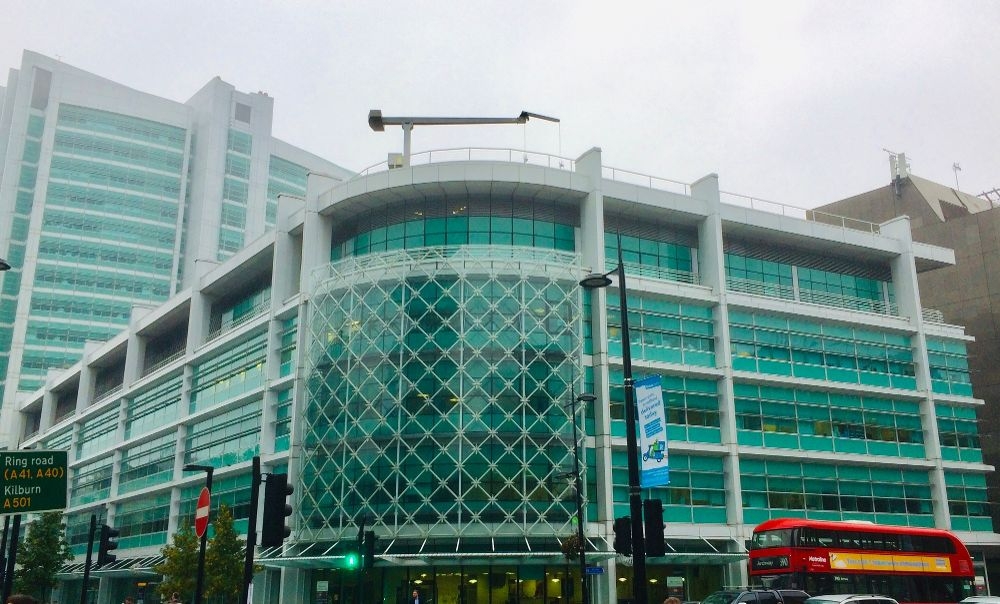 |
| Photo: Glassdoor |
University College Hospital (UCH) is a teaching hospital in the Fitzrovia area of the London Borough of Camden, England. The hospital, which was founded as the North London Hospital in 1834, is closely associated with University College London (UCL), who’s main campus is situated next door. The hospital is part of the University College London Hospitals NHS Foundation Trust.
The hospital is on the south side of Euston Road and its tower faces Euston Square tube station on the east side. Warren Street tube station lies immediately west and the major Euston terminus station is beyond 200 metres east, just beyond Euston Square Gardens.
The hospital has 665 in-patient beds, 12 operating theatres and houses the largest single critical care unit in the NHS. The Accident and Emergency department sees approximately 120,000 patients a year. It is a major teaching hospital and a key location for the UCL Medical School. It is also a major centre for medical research and part of both the UCLH/UCL Biomedical Research Centre and the UCL Partners academic health science centre.
The urology department moved to University College Hospital at Westmoreland Street, formerly the Heart Hospital, in 2015.
Related: 10 Highest Paying Jobs in the UK: Healthcare Dominate
3 Addenbrooke's
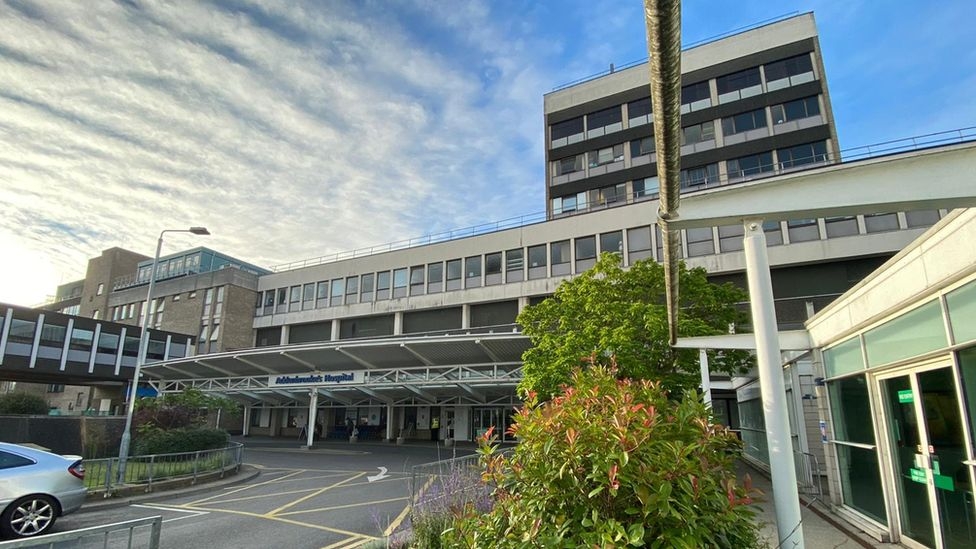 |
| Photo: BBC |
Addenbrooke's Hospital is an internationally renowned teaching hospital and research centre in Cambridge, England, with strong affiliations to the University of Cambridge. Addenbrooke's Hospital is based on the Cambridge Biomedical Campus. The hospital is run by Cambridge University Hospitals NHS Foundation Trust and is a designated academic health science centre. It is also the East of England's major trauma centre and was the first such centre to be operational in the United Kingdom.
Addenbrooke's provides a full range of clinical services, with two exceptions: cardiothoracic surgery is performed at the adjacent Royal Papworth Hospital (which re-located to the Cambridge Biomedical Campus in 2019); maternity services are provided at the adjacent Rosie Hospital, which has a midwife-led birth unit and birth pool.
Addenbrooke's is a designated Major Trauma Centre. This was the first regional Major Trauma Centre in England to become fully operational and was featured on the BBC documentary series 'Life Savers' in 2013.
Addenbrooke's is a tertiary referral centre for a number of specialities. It is one of the UK's seven liver transplant centres and performs multivisceral transplants. It is a busy regional neurosurgical centre and has the largest neurological intensive care unit of its kind in Europe. It is also a centre of excellence for renal services, bone marrow transplantation, cleft lip and palate reconstruction, treatment of rare cancers, medical genetics, and paediatrics. Addenbrooke's is also the designated regional centre for pancreatic, biliary and liver cancer surgery and tertiary referral centre for complex pancreatitis. It has 37 operating theatres, and in addition to the neurosciences (neurosurgery and neurology) critical care unit it also has an adult, a paediatric, and a neonatal intensive care service, and several high-dependency areas (adult, paediatric, transplant, surgical, coronary care).
4 John Radcliffe Hospital
The John Radcliffe Hospital (informally known as the JR) is a large tertiary teaching hospital in Oxford, England. It forms part of the Oxford University Hospitals NHS Foundation Trust and is named after John Radcliffe, an 18th-century physician and Oxford University graduate, who endowed the Radcliffe Infirmary, the main hospital for Oxford from 1770 until 2007.
It is the main teaching hospital for Oxford University and Oxford Brookes University, and incorporates the Oxford University Medical School.
Oxford University Hospitals NHS Foundation Trust (OUH) is the NHS Host, with the University of Oxford as the Academic Partner, for one of the leading Biomedical Research Centres (BRC) in the UK. The National Institute for Health Research (NIHR) Oxford Biomedical Research Centre (OxBRC) was one of the 11 original BRCs in 2007, and was awarded £114 million by the UK Department of Health (DH) for its third tranche of research, to begin in April 2017. At the same time, the nearby Oxford Health NIHR BRC, also partnered by the University of Oxford, was awarded a further £12 million, bringing a total of £126 million in research funds to the city.
5 St. Bartholomew's Hospital
St Bartholomew's Hospital, commonly known as Barts, is a teaching hospital located in the City of London. It was founded in 1123 and is currently run by Barts Health NHS Trust.
Barts was founded in 1123 by Rahere (died 1144, and entombed in the nearby Priory Church of St Bartholomew the Great), a favourite courtier of King Henry I. The dissolution of the monasteries did not affect the running of Barts as a hospital, but left it in a precarious position by removing its income. It was refounded by King Henry VIII in December 1546, on the signing of an agreement granting the hospital to the Corporation of London.
The hospital became legally styled as the "House of the Poore in Farringdon in the suburbs of the City of London of Henry VIII's Foundation", although the title was never used by the general public. The first superintendent of the hospital was Thomas Vicary, sergeant-surgeon to King Henry, and an early writer on anatomy. It was here that William Harvey conducted his research on the circulatory system in the 17th century, Percivall Pott and John Abernethy developed important principles of modern surgery in the 18th century, and Mrs Bedford Fenwick worked to advance the nursing profession in the late 19th century.
From 1839 to 1872, the mortality reports show that surgical trauma and postoperative infection were the greatest causes of death. Tuberculosis, however, remained the most fatal nontraumatic cause of death. Nurses were expected to work 12 hours a day, and sometimes 14, with meal breaks in 1890. They had 2 weeks annual holiday. Upon the creation of the National Health Service in 1948, it officially became known as St Bartholomew's Hospital.
Top 10 Countries With The Best Healthcare System and Why
6 Guy's Hospital
 |
| Photo: Glassdoor |
Guy's Hospital is an NHS hospital in the borough of Southwark in central London. It is part of Guy's and St Thomas' NHS Foundation Trust and one of the institutions that comprise the King's Health Partners, an academic health science centre.
It is a large teaching hospital and is, with St Thomas' Hospital and King's College Hospital, the location of King's College London GKT School of Medical Education.
The hospital's Tower Wing (originally known as Guy's Tower) was, when built, the tallest hospital building in the world, standing at 148.65 metres (487.7 ft) with 34 floors. The tower was overtaken as the world's tallest healthcare-related building by The Belaire in New York City in 1988. As of June 2019, the Tower Wing, which remains one of the tallest buildings in London, is the world's fifth-tallest hospital building.
Medical services at the Guy's site are now concentrated in the buildings to the east of Great Maze Pond: these buildings, which are connected, are known as Tower Wing, Bermondsey Wing, Southwark Wing and Borough Wing. The Cancer Centre is in a separate building just to the south. To the west of the Great Maze Pond is Guy's Campus which forms part of King's College London.
At 148.65 metres (487.7 ft) high, Guy's Tower (now called the Tower Wing) regained its tallest hospital building in the world status in 2014. It has since been surpassed by the Outpatient Center at the Houston Methodist Hospital, in Houston, USA at 156.05 metres (512.0 ft).
7 Chelsea and Westminster Hospital
Chelsea and Westminster Hospital is a 430-bed teaching hospital located in Chelsea, London. Although the hospital has been at its present site since only 1993, the hospital has a rich history in that it serves as the new site for the Westminster Hospital. It is operated by Chelsea and Westminster Hospital NHS Foundation Trust, and has close ties with Imperial College London. Many of the hospital's employees hold research contracts with Imperial College London, and the hospital plays an integral role in teaching students at Imperial College London.
Radio Chelsea and Westminster is the hospital's own hospital radio station, available for; patients, staff and the local community. It was launched in 1977 to provide music and escapism for patients. Patients are able to listen to the hospital radio on Channel 6 on their hospedia bedside unit, or online at www.radiocw.org. The radio station has featured in a number of locations around the hospital it is currently on the second floor of the hospital between lift banks C and D. GB News presenter Nana Akua used to work for the station.
8 Queen Elizabeth Hospital Birmingham
The Queen Elizabeth Hospital Birmingham is a major, 1,215 bed, tertiary NHS and military hospital in the Edgbaston area of Birmingham, situated very close to the University of Birmingham. The hospital, which cost £545 million to construct, opened on 16 June 2010, replacing the previous Queen Elizabeth Hospital and Selly Oak Hospital. It is one of the largest single-site hospitals in the United Kingdom and is part of one of the largest teaching trusts in England.
It is named after Queen Elizabeth The Queen Mother, who was queen consort and wife of King George VI from 1936 until his death in 1952.
The hospital provides a whole range of services including secondary services for its local population and regional and national services for the people of the West Midlands and beyond. The hospital has the largest solid organ transplantation programme in Europe. It has the largest renal transplant programme in the United Kingdom and it is a national specialist centre for liver, heart and lung transplantation, as well as cancer studies. The hospital has the largest single-floor critical care unit in the world with 100 beds, and is the home of the Royal Centre for Defence Medicine for military personnel injured in conflict zones. It is also a regional centre for trauma and burns. The hospital is served by University railway station which is a five-minute walk away.
9 Freeman Hospital
The Freeman Hospital is an 800-bed tertiary referral centre in Newcastle upon Tyne, England. The hospital is managed by the Newcastle upon Tyne Hospitals NHS Foundation Trust and is a teaching hospital for Newcastle University.
The hospital is one of the main organ transplantation hospitals in the United Kingdom, mostly well known for its successful rates of infant cardiology and transplantation for adults. In 1987 the UK's first paediatric heart transplant was carried out on Kaylee Davidson-Olley, at the Freeman. It is funded and designated by the government as the UK's third transplant hospital. It made history when both the first successful single and double lung transplants in Europe were carried out at the hospital in 1990. The Freeman is the location of the Institute of Transplantation.
The Northern Cancer Centre is also home to the Bobby Robson clinical trials unit which specialises in oncology clinical trials.
10 The Royal Victoria Infirmary
The Royal Victoria Infirmary (RVI) is a 673-bed tertiary referral centre in Newcastle upon Tyne, England. The hospital is part of the Newcastle upon Tyne Hospitals NHS Foundation Trust and is a teaching hospital for the University of Newcastle upon Tyne.
The hospital has three main wings: the Leazes Wing, the Claremont Wing and the New Victoria Wing. The Great North Children's Hospital, one of only fourteen major children's medical centres in the UK, adjoins the New Victoria Wing. The infirmary is also the only provider of Mohs micrographic surgery for skin cancer in the North East of England.
 20 Best & Cheapest Online Healthcare Administration Programs 20 Best & Cheapest Online Healthcare Administration Programs This post guides the top 20 best and cheapest programs that offer the most affordable online bachelor in healthcare administration degrees. |
List of Top 10 Worst Hospitals in the UK
1. Derriford Hospital
2. South West Acute Hospital
3. West Middlesex University Hospital
4. Royal Blackburn Hospital
5. Leicester Royal Infirmary
6. Royal Hampshire County Hospital
7. Darren Valley Hospital
8. Bradford Royal Infirmary
9. University Hospitals of North Durham
10. Broadgreen Hospital
What are the worst hospitals in the UK?
1. Derriford Hospital
Derriford Hospital is a large teaching hospital in Plymouth, England. The hospital serves Plymouth and nearby areas of Devon and Cornwall. It also provides tertiary cardiothoracic surgery, neurosurgery and renal transplant surgery for the whole of the South West Peninsula. It is managed by the University Hospitals Plymouth NHS Trust. It was designated a major trauma centre in 2013. A helipad capable of night operation was opened in 2015, to replace the existing daytime-only grass pad. The hospital is used for clinical training of medical students from the Plymouth University Peninsula School of Medicine. It is one of five hospitals with attached Ministry of Defence Hospital Units to cater to service personnel.
Derriford is a teaching hospital, linked to the Peninsula Medical School, and has a Ministry of Defence Hospital Unit integrated into the facility, with military personnel working in medical roles. The hospital includes specialist services, including pancreatic cancer surgery, plastic surgery and neonatal intensive care. In 2016, more than 48,000 people used the hospital each week, accessing 900 beds and 1,000 car parking spaces. The bus terminal at the hospital is the second largest in Plymouth.
2. South West Acute Hospital
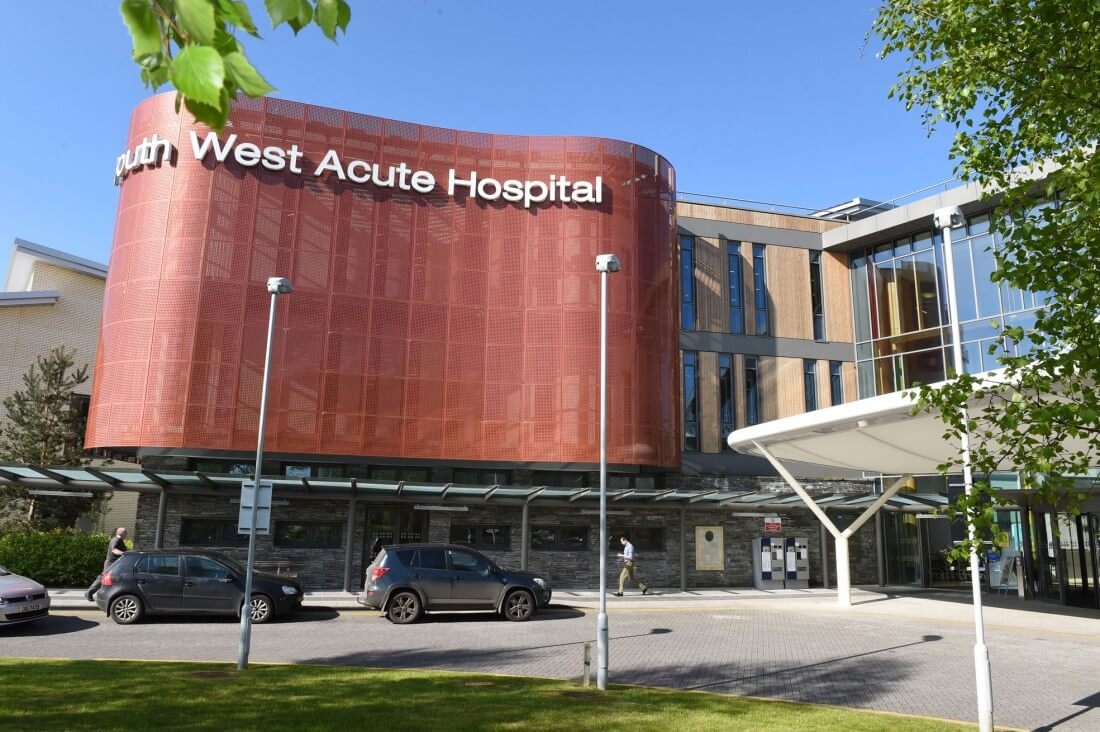 |
| Photo: The Fermanagh Herald |
South West Acute Hospital is a local teaching hospital located in Enniskillen, County Fermanagh, Northern Ireland. It is managed by Western Health and Social Care Trust.
The hospital was built to replace the Erne Hospital, and was opened by the Queen and the Duke of Edinburgh on 21 June 2012. It was the first new hospital to be built in Northern Ireland for more than a decade, and was the first hospital in Northern Ireland with single ensuite rooms for every patient.
The hospital has up to 210 inpatient and 22 day-case beds
The hospital has been designated as one of the nine acute hospitals in the acute hospital network of Northern Ireland on which healthcare would be focused under the government health policy 'Developing Better Services'
3. West Middlesex University Hospital
West Middlesex University Hospital (WMUH) is an acute NHS hospital in Isleworth, West London, operated by Chelsea and Westminster Hospital NHS Foundation Trust. It is a teaching hospital of Imperial College School of Medicine and a designated academic health science partner (Imperial College Academic Health Sciences Partnership). West Middlesex University Hospital serves patients in the London Boroughs of Hounslow, Richmond upon Thames and Ealing. The hospital has over 400 beds and provides a full range of clinical services including accident and emergency, acute medicine, care of the elderly, surgery and maternity.
In 1894, the Brentford Board of Guardians bought a property at Isleworth from Lord Warkworth to accommodation an infirmary for the local workhouse. The hospital opened by Princess Mary of Teck as the Brentford Workhouse Infirmary in October 1896. It became known as the West Middlesex Hospital in 1920 and the West Middlesex County Hospital in 1931. A new maternity department was opened by Queen Mary as the Queen Mary Maternity Wing in 1932. Following bombing during the World War II, the Queen Mary Maternity Wing was repaired and re-opened by the Duchess of Gloucester in 1960. It became the West Middlesex University Hospital in 1991.
An extensive redevelopment of the site was procured under a Private Finance Initiative contract in 2001. The works, which were carried out by Bouygues at a cost of £55 million, were completed in 2003.
In December 2011, West Middlesex University Hospital was awarded full accreditation by UNICEF as a Baby Friendly hospital, the first London hospital to achieve this award. In September 2012 the trust concluded that it was not viable for it to apply for NHS Foundation Trust status and decided to seek a potential partner. On 1 September 2015, West Middlesex University Hospital became part of Chelsea and Westminster Hospital NHS Foundation Trust.
4. Royal Blackburn Hospital
The Royal Blackburn Teaching Hospital is an acute District General Hospital in Blackburn, Lancashire operated by the East Lancashire Hospitals NHS Trust.
The original hospital on the site was established as an infirmary for the local workhouse in February 1864. Additions included a medical wing in 1903, a children's wing in 1925 and a 74-bed annexe in 1926. In 1929 it became known as the Queen's Park Institution, a name which evolved to become the Queen's Park Hospital.
A new hospital, to be known as the Royal Blackburn Teaching Hospital, was procured under a Private Finance Initiative contract in 2003 to replace the Queen's Park Hospital and the Blackburn Royal Infirmary. It was built by Balfour Beatty at a cost of £133 million and opened in July 2006.
In 2019 the government gave approval for a £10million "care village" to be constructed on the existing site, providing an additional 31 accident and emergency beds.
5. Leicester Royal Infirmary
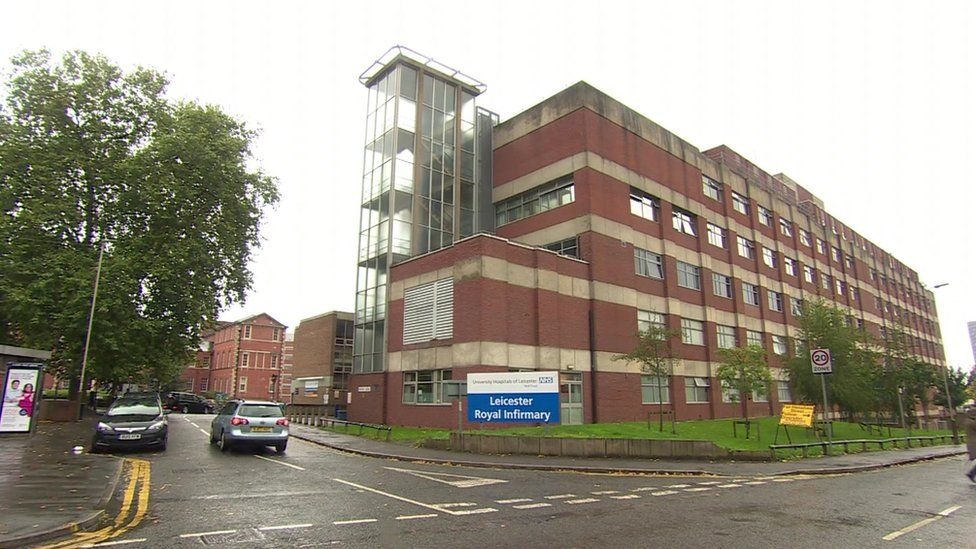 |
| Photo: BBC |
The Leicester Royal Infirmary (LRI) is a National Health Service hospital in Leicester, England. It is located to the south-west of the city centre. It has an accident and emergency department and is managed by of the University Hospitals of Leicester NHS Trust.
The NHS data, which encompasses the seven days to December 5, 2020, revealed a worrying picture for emergency patients across England, with more than 8,000 delays of more than an hour recorded across all health trusts in the country.
Leicester, according to the data, was the third worst for waiting times in those past seven days, with hundreds of people affected by the delays.
The data, which records the time between arrival and handover to A&E departments, showed that the University Hospitals of Leicester Trust reported 317 cases of delays of more than an hour.
That put them third behind the University Hospitals Bristol & Weston Foundation Trust and the University Hospitals Birmingham Foundation Trust, which had 353 and 322 cases respectively.
The Leicester Trust also came third in the number of delays of at least 30 minutes, with the University Hospitals of Leicester recording 490 such incidents.
Delays in the handover process do not always mean a patient has waited in the ambulance as they may have been moved into an A&E department, but staff were not available to complete the handover.
6. Royal Hampshire County Hospital
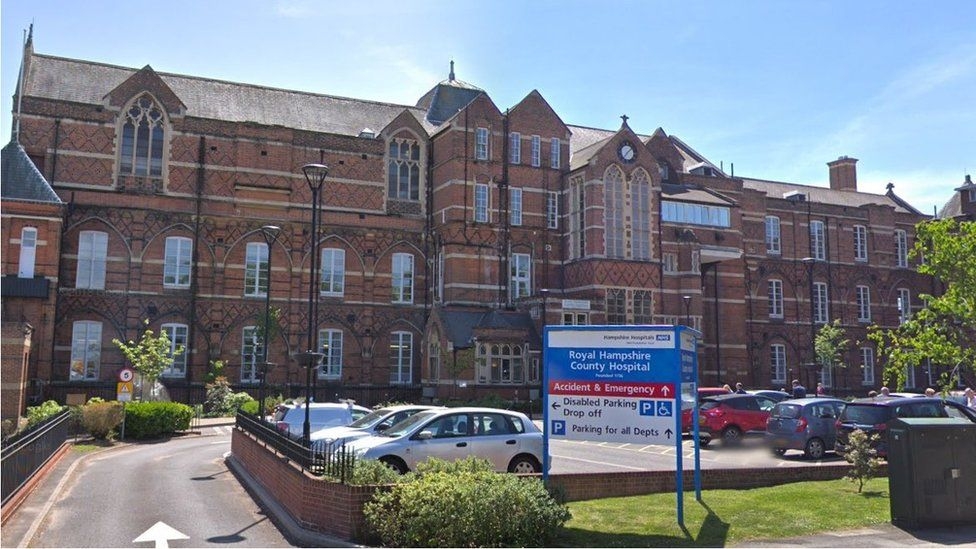 |
| Photo: BBC |
The Royal Hampshire County Hospital in Winchester is a District General Hospital serving much of central Hampshire. It is owned and run by the Hampshire Hospitals NHS Foundation Trust. It is commonly abbreviated to RHCH, or alternatively, Winchester Hospital as it is the only open NHS hospital in Winchester.
The Hampshire County Hospital was founded in Winchester in 1736 and initially was based in Colebrook Street before moving to a site in Parchment Street in 1759. Due to drainage issues, a site on higher ground was sought and the hospital moved to its present site on Romsey Road. Florence Nightingale advised on the construction on this new site and the architect William Butterfield designed the new hospital, which opened in 1868 with sixteen in-patients and fourteen out-patients. Queen Victoria awarded the hospital its "Royal" prefix.
Later additions to the site include the old Outpatients Department in 1927, Florence Portal House (Gynaecology and Maternity) in 1974, Nightingale Wing in 1986, Brinton Wing in 1992, and the new treatment and diagnostic centre (Burrell Wing) in 2006. The education centre and library was also rebuilt in 2006.
At about 4pm on 9 December 2011, a fire broke out in the MRI Scanner Room; destroying the MRI Scanner and one of two CT Scanners, as well as the control room for all the scanners. The A&E Department next door survived, but was closed overnight, opening only for minor injuries the following night for several days until CT Scanning facilities were made available.
In January 2012, the Basingstoke and North Hants Hospitals NHS Foundation Trust merged with the Winchester and Eastleigh NHS Trust; forming a combined organisation henceforward called Hampshire Hospitals NHS Foundation Trust.
7. Darren Valley Hospital
Darent Valley Hospital is a 478-bed, acute district general hospital in Dartford, Kent, England. The hospital has an Emergency Department. The hospital is managed by the Dartford and Gravesham NHS Trust.
The hospital, which was built to replace Joyce Green Hospital, stands on the site of the former Darenth Park Hospital, founded by the Metropolitan Asylums Board as "Darenth School" in 1878. The Regional Health Board agreed to close Darenth in 1973, but the last patients did not leave until 1988. The vast Victorian complex was then demolished.
The new buildings were procured under a Private Finance Initiative contract in 1997, the first hospital project to use this form of procurement. They were designed by Nightingale Paulley Associates and built by Carillion at a cost of £94 million. The new hospital, which replaced the services previously provided at West Hill Hospital, Dartford and Joyce Green Hospital, Dartford, was officially opened by Alan Milburn, Secretary of State for Health, on 14 December 2000.
A new on-site heart centre was opened on 2 January 2007.
8. Bradford Royal Infirmary
Bradford Royal Infirmary is a large teaching hospital in Bradford, West Yorkshire, England, and is operated by the Bradford Teaching Hospitals NHS Foundation Trust. The infirmary is affiliated with the Leeds School of Medicine.
The hospital has its origins in the Bradford Public Dispensary founded in 1825. It opened at Darley Street in 1827 and moved to Westgate as the Bradford Infirmary in 1843. In December 1882 the infirmary staff responded to the Newlands Mill chimney collapse which resulted in the loss of 54 lives, mostly young girls and boys. The facility became the Bradford Royal Infirmary in 1897 in commemoration of Queen Victoria’s Diamond Jubilee.
The foundation stone for the current facility in Duckworth Lane was laid by the Duke and Duchess of York in 1928 and the facility opened in 1936. It joined the National Health Service in 1948. The hospital was noted for being a pioneer in the field of chemotherapy under Professor Robert Turner and George Whyte-Watson in the 1950s.
Specialist services include support from the Yorkshire Cochlear Implant Service for young children and adults that have a Cochlear implants.
The hospital hosts the 'Centre for Ageing' a research group focused on applied health research on older people and funded by the Wolfson foundation.
9. University Hospitals of North Durham
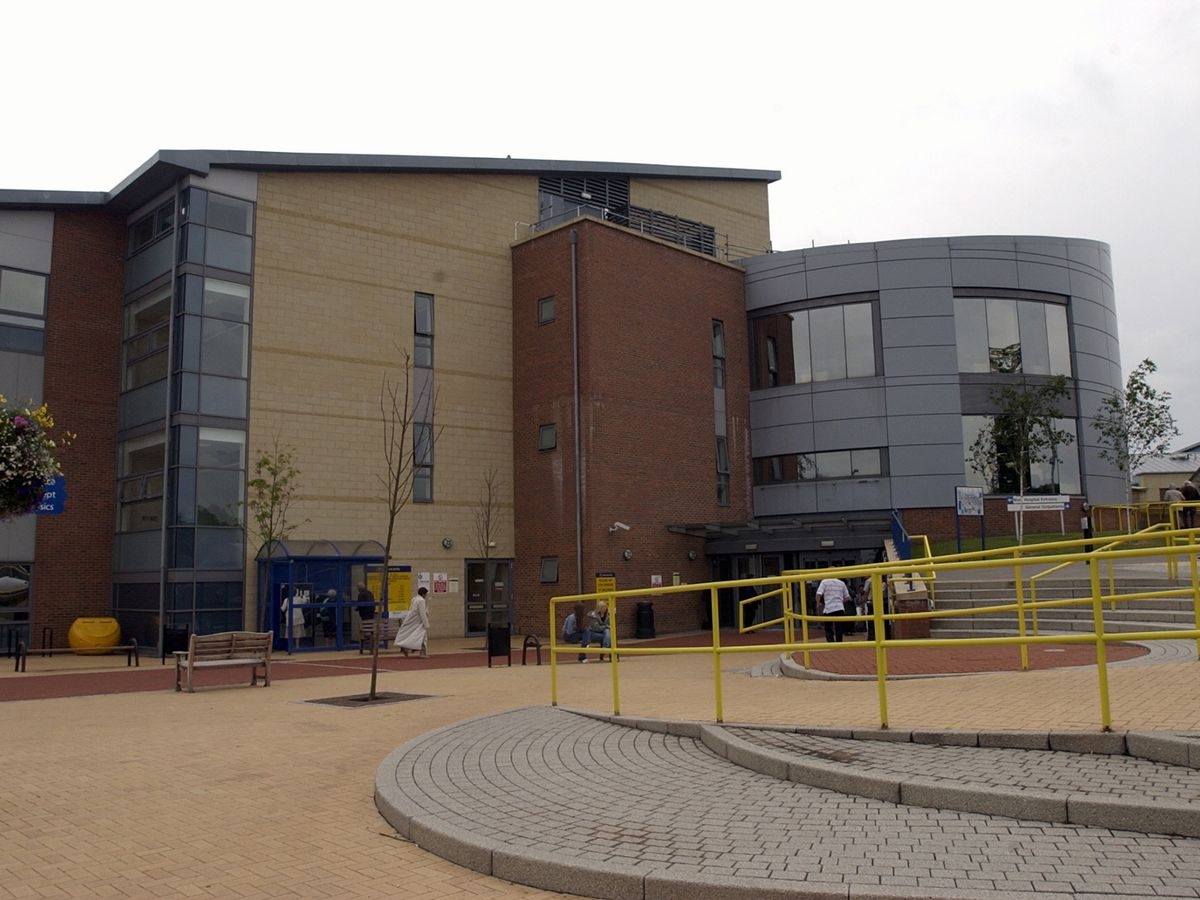 |
| Photo: Chronicle Live |
University Hospital of North Durham is an acute care hospital built to replace the older Dryburn Hospital on the same site. It is managed by the County Durham and Darlington NHS Foundation Trust.
The main hospital building contains the vast majority of the hospitals departments. It has a basement for pathology and pharmacy and three other floors, each consisting of a long main corridor with wards and departments on both sides. Most of the wards consist of four single beds in each room, as well as side rooms. A few buildings from the original "Dryburn Hospital" remain in operation. These buildings include Dryburn House which is used as the hospital doctor's residence.
In 2014 a BBC report identified that "out of 126 serious incidents when patients were delayed admission to hospitals for more than two hours, 71 happened at the University Hospital of North Durham". The hospital trust subsequently announced they had earmarked £5.6million to invest into the emergency departments at Darlington Memorial Hospital and University Hospital of North Durham.
That focus has resulted in improved patient perceptions but a 2015 Care Quality Commission assessment of the County Durham and Darlington NHS Foundation Trust resulted in an overall "Requires Improvement" rating.
A subsequent inspection undertaken in July 2019 and published the following December raised this rating to "Good".
10. Broadgreen Hospital
 |
| Photo: Wikipedia |
Broadgreen Hospital is a teaching hospital in the eastern suburb of Broadgreen in the city of Liverpool, England. The hospital, alongside the Royal Liverpool University Hospital and Liverpool University Dental Hospital in the city centre is managed by the Liverpool University Hospitals NHS Foundation Trust.
The hospital was established as an epileptic home known as the Highfield Infirmary in 1903. It became the Highfield Sanatorium for tuberculosis sufferers in 1922, the Broadgreen Sanatorium in 1929 and, on joining the National Health Service it became the Broadgreen Hospital in 1946. Following a review of local health care provisions within the city in 1989 and the ongoing reforms of the NHS, the local health authority of the time opted to close the accident and emergency department and centralise the facility at the Royal Liverpool University Hospital. Despite fierce opposition at the proposals from members of the public, staff at the hospital and local GP's and politicians - Broadgreen Hospital A&E Department was shut down on a phased basis from 1994, before closing permanently in 1996.
Here are the full list of the best and worst hospital in the UK.
The Full List of 100+ UK hospitals, Ranked from Best to Worst
| 1 | St Thomas' Hospital | 89.11% | London |
| 2 | University College Hospital | 88.07% | London |
| 3 | Addenbrooke's | 85.28% | Cambridge |
| 4 | John Radcliffe Hospital | 85.12% | Oxford |
| 5 | St. Bartholomew's Hospital | 83.32% | London |
| 6 | Guy's Hospital | 83.13% | London |
| 7 | Chelsea and Westminster Hospital | 82.85% | London |
| 8 | Queen Elizabeth Hospital Birmingham | 82.28% | Birmingham |
| 9 | Freeman Hospital | 82.22% | Newcastle Upon Tyne |
| 10 | The Royal Victoria Infirmary | 81.48% | Newcastle Upon Tyne |
| 11 | Salford Royal | 79.23% | Salford |
| 12 | St Richard's Hospital | 78.66% | Chichester |
| 13 | East Surrey Hospital | 78.23% | Redhill |
| 14 | Wythenshawe Hospital | 78.08% | Manchester |
| 15 | King's College Hospital | 77.78% | London |
| 16 | The Royal London Hospital | 77.56% | London |
| 17 | London Bridge Hospital | 77.36% | London |
| 18 | St Mary's Hospital | 77.14% | London |
| 19 | Worthing Hospital | 77.10% | Worthing |
| 20 | Leeds General Infirmary | 76.99% | Leeds |
| 21 | Hexham General Hospital | 76.84% | Hexham |
| 22 | Frimley Park Hospital | 76.82% | Camberley |
| 23 | Royal Free Hospital | 76.72% | London |
| 24 | Northern General Hospital | 76.65% | Sheffield |
| 25 | Bristol Royal Infirmary | 76.49% | Bristol |
| 26 | Royal Derby Hospital | 76.00% | Derby |
| 27 | Manchester Royal Infirmary | 75.81% | Manchester |
| 28 | Homerton University Hospital | 75.45% | London |
| 29 | BMI The London Independent Hospital | 75.42% | London |
| 30 | Glasgow Royal Infirmary | 75.41% | Glasgow |
| 31 | Royal Hallamshire Hospital | 75.28% | Sheffield |
| 32 | Royal Berkshire Hospital | 75.06% | Reading |
| 33 | Royal Infirmary of Edinburgh at Little France | 75.00% | Edinburgh |
| 34 | Nottingham University Hospitals - Queen's Medical Centre Campus | 74.98% | Nottingham |
| 35 | Southampton General Hospital | 74.87% | Southampton |
| 36 | Hammersmith Hospital | 74.78% | London |
| 37 | St Helens Hospital | 74.56% | St. Helens |
| 38 | The Princess Grace Hospital | 74.34% | London |
| 39 | Royal Devon and Exeter Hospital (Wonford) | 74.20% | Exeter |
| 40 | St James's Hospital | 74.20% | Leeds |
| 41 | St George's Hospital | 74.19% | London |
| 42 | University Hospital Of Wales | 73.92% | Cardiff |
| 43 | Nuffield Health - Leeds Hospital | 73.84% | Leeds |
| 44 | Musgrove Park Hospital | 73.78% | Taunton |
| 45 | Queen Elizabeth University Hospital | 73.76% | Glasgow |
| 46 | Tameside General Hospital | 73.70% | Ashton Under Lyne |
| 47 | Kingston Hospital | 73.62% | Kingston Upon Thames |
| 48 | Stoke Mandeville Hospital | 73.54% | Buckinghamshire |
| 49 | Poole Hospital | 73.43% | Poole |
| 50 | Queen Elizabeth Hospital - Gateshead | 73.39% | Gateshead |
| 51 | Royal Surrey County Hospital | 73.14% | Guildford |
| 52 | The Whittington Hospital | 73.02% | London |
| 53 | Chapel Allerton Hospital | 72.91% | Leeds |
| 54 | The London Clinic | 72.81% | London |
| 55 | New Cross Hospital | 72.78% | Wolverhampton |
| 56 | Southmead Hospital | 72.74% | Bristol |
| 57 | Northumbria Specialist Emergency Care Hospital | 72.65% | Cramlington |
| 58 | Whiston Hospital | 72.50% | Prescot |
| 59 | Glenfield Hospital | 72.45% | Leicester |
| 60 | Royal United Hospital | 72.44% | Bath |
| 61 | Harrogate District Hospital | 72.44% | Harrogate |
| 62 | King's Mill Hospital | 72.40% | Sutton-In-Ashfield |
| 63 | Conquest Hospital | 72.29% | St. Leonards-on-Sea |
| 64 | Bupa Cromwell Hospital | 72.28% | London |
| 65 | Trafford General Hospital | 72.28% | Manchester |
| 66 | Heatherwood Hospital | 72.22% | Ascot |
| 67 | Royal Bolton Hospital | 72.14% | Bolton |
| 68 | Royal Victoria Hospital | 72.09% | Belfast |
| 69 | St John's Hospital | 72.07% | Livingston |
| 70 | Basingstoke and North Hampshire Hospital | 71.98% | Basingstoke |
| 71 | Calderdale Royal Hospital | 71.89% | Halifax |
| 72 | Nottingham University Hospitals - City Campus | 71.87% | Nottingham |
| 73 | University Hospital - Coventry | 71.86% | Coventry |
| 74 | Crawley Hospital | 71.84% | Crawley |
| 75 | Withington Community Hospital | 71.79% | Manchester |
| 76 | Luton and Dunstable Hospital | 71.68% | Luton |
| 77 | North Tyneside General Hospital | 71.63% | North Shields |
| 78 | Wexham Park Hospital | 71.60% | Slough |
| 79 | Clifton Hospital | 71.55% | Lytham St. Annes |
| 80 | Golden Jubilee National Hospital | 71.40% | Glasgow |
| 81 | Wellington Hospital | 71.32% | London |
| 82 | Grantham and District Hospital | 71.23% | Grantham |
| 83 | Royal Albert Edward Infirmary | 71.13% | Wigan |
| 84 | Charing Cross Hospital | 71.09% | London |
| 85 | Burnley General Hospital | 71.08% | Burnley |
| 86 | The Alexandra Hospital | 71.05% | Cheadle |
| 87 | Southend Hospital | 71.03% | Westcliff-on-Sea |
| 88 | Castle Hill Hospital | 70.96% | Cottingham |
| 89 | Hospital Of St Cross | 70.91% | Rugby |
| 90 | Warwick Hospital | 70.83% | Warwick |
| 91 | Bassetlaw Hospital | 70.68% | Worksop |
| 92 | Queen Elizabeth Hospital - London | 70.67% | London |
| 93 | The York Hospital | 70.61% | York |
| 94 | Horton General Hospital | 70.52% | Banbury |
| 95 | Northampton General Hospital | 70.47% | Northampton |
| 96 | Norfolk and Norwich University Hospital | 70.30% | Norwich |
| 97 | James Paget University Hospital | 70.24% | Great Yarmouth |
| 98 | Brighton General Hospital | 70.19% | Brighton |
| 99 | Princess Royal Hospital | 70.18% | Haywards Heath |
| 100 | Eastbourne District General Hospital | 70.14% | Eastbourne |
| 101 | The James Cook University Hospital | 70.04% | Middlesbrough |
| 102 | Darlington Memorial Hospital | 70.02% | Darlington |
| 103 | Newark Hospital | 70.00% | Newark |
| 104 | University Hospital Of Hartlepool | 69.96% | Hartlepool |
| 105 | West Suffolk Hospital | 69.95% | Bury St. Edmunds |
| 106 | Barnsley Hospital | 69.94% | Barnsley |
| 107 | Cheltenham General Hospital | 69.90% | Cheltenham |
| 108 | City Hospital Birmingham | 69.78% | Birmingham |
| 109 | Queen Mary's Hospital | 69.77% | London |
| 110 | Chesterfield Royal Hospital | 69.77% | Chesterfield |
| 111 | Epsom Hospital | 69.75% | Epsom |
| 112 | Broadgreen Hospital | 69.69% | Liverpool |
| 113 | University Hospital Of North Durham | 69.65% | Durham |
| 114 | Bradford Royal Infirmary | 69.60% | Bradford |
| 115 | Darent Valley Hospital | 69.48% | Dartford |
| 116 | Royal Hampshire County Hospital | 69.42% | Winchester |
| 117 | Leicester Royal Infirmary | 69.41% | Leicester |
| 118 | Royal Blackburn Hospital | 69.41% | Blackburn |
| 119 | West Middlesex University Hospital | 69.39% | Isleworth |
| 120 | South West Acute Hospital | 69.32% | Enniskillen |
| 121 | Derriford Hospital | 69.30% | Plymouth |


























